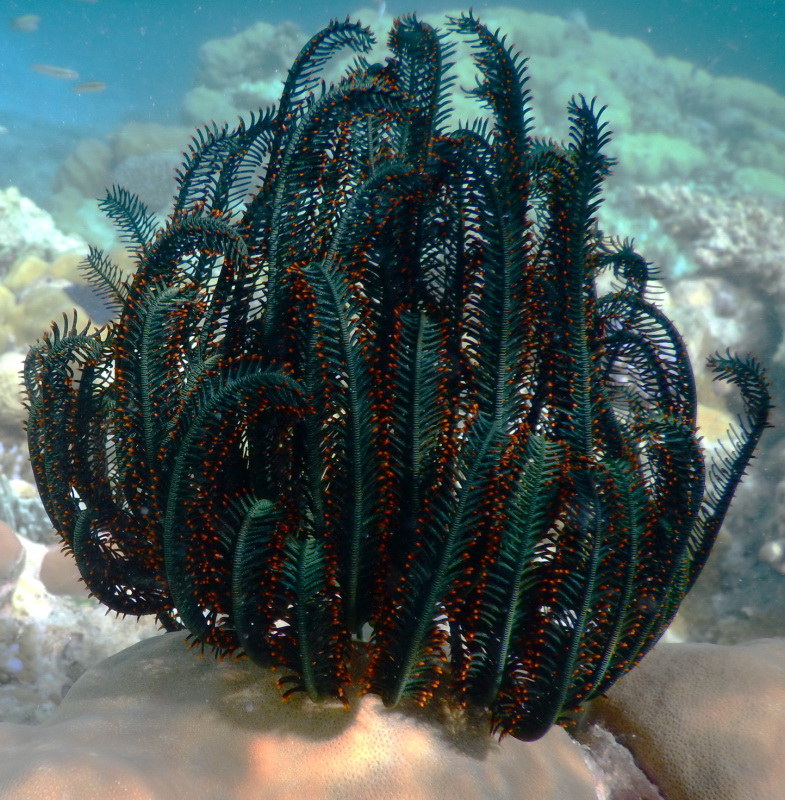Published in the Ocean Watch column, Honolulu Star-Advertiser © Susan Scott
February 18, 2017
KOROR, PALAU >> My week in Palau was not what my eight snorkeling companions and I had pictured. Winter is the dry season here, where usually the days are sunny, the water is clear and jumping off the boat is a relief from the tropical heat. But Mother Nature doesn’t care if visitors have only one week to enjoy paradise. An unseasonal storm front moved over Palau and stalled there.
Blustery squalls drove needlelike rain into our faces, preventing the boat from going to reefs exposed to the strong wind and big waves. Not ones to give up, our resourceful guide and driver found two previously unexplored reefs in bays protected from the wind. Because they were surprise discoveries, they were also protected from other tour boats. The areas were ours alone to enjoy.
 Feather stars are related to starfish. Standing a foot tall,
Feather stars are related to starfish. Standing a foot tall,
they resemble a bouquet of flexible twigs.
©2017 Susan Scott
The first new reef Robin and Matty found we named Oceanic Coral Garden, a place deserving of the name garden. Sponges in brilliant red, yellow, orange and blue squeezed between, and plastered themselves on, a multitude of coral heads.
Sponges look stuck in one place for life, but these filter feeders can walk. When it needs to move to a better food gathering place in the current, a sponge absorbs cells from one side of the body and deposits them on the other.
Sponges’ gradual way of relocating makes snails look like NASCAR racers. But sponge colors, shapes and the fact that they get around at all made sponges a group favorite.
Crinoid Cove is the name we gave our other private place. The peaks and valleys there were of such coral diversity, it looked as if a bunch of patchwork quilts had been draped over tall tables and low chairs. And on top of nearly each rise perched a crinoid, also known as a feather star.
A flamboyant cousin of starfish, a feather star looks like a bouquet of flexible twigs, called arms, standing about a foot tall. On both sides of each twig extend sticky tube feet spaced like the teeth of a comb.
When a piece of animal plankton drifts into a crinoid’s combs, the gluey feet trap it. The animal then covers the gummy meal with slippery mucus and slides it, with beating hairs, down the middle of the arm’s shaft to the central mouth.
Feather stars hang onto their hilltops with rootlike “feet” and are easily knocked off their perch. No worries. A feather star can swim by curling and flapping those twiglike arms and once again be king of the hill.
Crinoids are two-toned, the base of the arms often black with tube feet of green, orange, yellow or white. Not common, feather stars are a sight to behold and along with the sponges were a group favorite.
Bad weather might spoil a trip but for some, but it didn’t for us. Because of the persistent storms, our wonderful Palauan guides found and shared two of their country’s secret gardens.
Next stop: Yap.